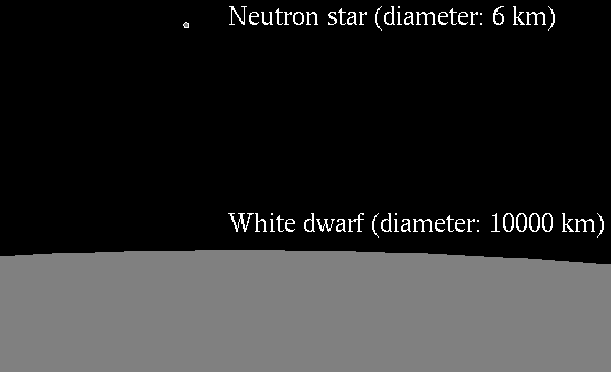Supernova (Type II)
Unlike a Type I Supernova, when the core of a massive star explodes as a Type II Supernova, it
DOES leave behind something: either a neutron star or a black hole.
When the core of a massive star runs out of Fuel:
- The core crushes the protons and electrons into neutrons. If the inner
core mass is less than a few Msuns, neutron degeneracy holds
up the star (neutron star is formed).
- The collapse spins UP the core to tremendous speeds and creates an enormous magnetic
field.
- The remaining material "bounces" off the collapsed neutron core and is
released in a Type II Supernova (creating very heavy elements).
- The final radius of a neutron star is about 10 km.. (city size) despite having
several times the mass of our Sun.


